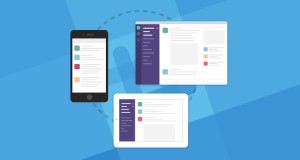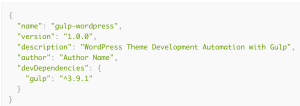Case Study – Win New Web Design Clients Through Direct Mail
This article recently appeared in the SitePoint Tribune, a weekly newsletter published by SitePoint.com To have articles like this delivered straight to your inbox, enter your email address in the subscription box below…
They say that great things are discovered by accident. This is certainly true for Martha Retallick of Lrpdesigns.com
She started her Web Design career in 1996 when she got the job to build a Website for her father’s chemical engineering consulting practice.
What she didn’t expect was that the marketing campaign she developed for her father’s Website would end up producing a ton of business for her!
Once she designed the site, she was tasked with promoting it. With the Website being a novel thing back in 1996, and her marketing budget almost non-existent, Martha decided to mail postcards via the US postal system to promote the site. She gathered the original address list from people on her and her father’s Rolodex.
“Shortly after I sent that card to just over 100 people, an amazing thing began to happen. Dad called me and said that this colleague, and that friend were interested in having me create a Website for them. Turned out that these people were all on my little mailing list! I ended up doing several Web design jobs, and one of those customers is still a client to this day,” says Martha.
The total cost for the first postcard campaign? Just $31.49. $23.20 for postage and $8.29 for the postcard printing.
Moving With The Times
With email so cheap these days, why would anyone use old-fashioned postcards to get the message out? Martha notes that the “problem is, most people are inundated with email. In fact, most people get hundreds of emails a week. On the other hand, most of us only get one or two postcards a week, if that many. See how easy it is to stand out from the crowd?”
That’s not to say that Martha doesn’t publish an email newsletter — she does! Why? “Because some things require a lot of explanation. And that means you’re going to have to use a lot of words, which won’t work very well on the back of a postcard. So you have to use the right tool for the job. And don’t just rely on one tool!” Martha adds.
“I try to do monthly mailings. If I do fewer than 9 card mailings a year my business is adversely affected, and, yes, I’ve learned that from experience.”
The Proof
At the moment, Martha contacts 450 people through every mailing! Here’s the result of just one recent campaign:
“I placed an order for 500 cards, and I received a total of 510 cards. I sent 402 cards to my mailing list, and kept the remaining 108 cards for sharing at networking events. Here are the costs associated with this postcard marketing effort:
Fedex digital files and payment to printer: $7.85
Printing and delivery of postcards: $107.00
Postage on 402 cards: $84.42
GRAND TOTAL: $199.27
“That works out to 49.6 cents a name ($199.27 divided by 402), or $5.95 per name per year, if a postcard is sent during each month of the year.
“What was the result of this postcard marketing campaign? One sale: an Internet consulting project involving a longtime client. Revenue from that project: $900. That’s about $4.52 back for every dollar invested ($900.00 divided by $199.27).”
Your Own Postcard Campaign
Alright, so you’re conviced that spending a few hundred dollars to try this out isn’t such a bad idea — what’s next? Here are the steps that Martha follows:
- Idea Generation & List Creation
- Card Creation
- Printing
- Mailing
- Follow-up with Prospects and Clients
- Cost-Tracking and Evaluation of Results
What if you don’t have 100+ addresses to do a mailing? Simple, says Martha. “Join business and professional groups. For example, you could join a couple of groups, each with 50 members, and guess what? You’ve found 100 prospects! The caveat to this idea is: some groups have restrictions on how the membership list can be used, so check the official policy before you start postcarding your fellow members.”
You can easily locate postcard printers through a search on Google. One company Martha has used recently is Modernpostcard.com
What should you put on your Postcard? It doesn’t have to be fancy. Recently Martha conducted a Joint-Venture mailing for ManagingTheFamilyBusiness.com . Here’s what the card read:
Lrpdesigns
Post Office Box 43161
Tucson, Arizona 85733
Telephone: 520-690-1888
Email: info@Lrpdesigns.com
Web: www.Lrpdesigns.com
FACT: 80% of American businesses
are family-owned, and 50% of all U.S.
employment is in small, family-owned
firms. Program your family business
for success – visit:
www.ManagingTheFamilyBusiness.com
Designed by Lrpdesigns – Specializing in
Web Design That Works since 1995:
www.Lrpdesigns.com
What about images for the front of the postcard? Of course, you can use anything that you design, but a screen shot of your Website works well. Even better, try a screen shot of a client’s Website along with a testimonial. The more powerful the better, so try something like: “The Website you built us now represents 30% of our revenue!” Exact numbers work best, whether they are traffic, revenue, or sales related.
Conclusion
Everybody gets email these days, but few of us receive postcards, and that’s why they can work so well for driving clients to your Web design business. A few hints to take away:
- Collect the addresses of potential clients. Go through your own roledex, and those of your friends and business associates. Consider joining a professional organization that makes its mailing list available to members or even scouring the yellow pages for companies without Websites (perhaps targeting one niche at a time).
- Figure out a short message for your postcard. Testimonials describing the specific results of past clients’ campaigns can be especially impressive.
- Find a postcard printing company through your favourite search engine and get a couple of hundred cards printed up. Enlist the help of friends and family in addressing them and mailing them out…
- Measure your results. Minimally, your mailing should be bringing in 4 times its cost in new business. If not, change your mailing list or postcard — or both.
- Send your mailings 6-9 times per year, even to the same addresses. Maybe someone won’t have a budget for Web design the first time they hear from you, but they might the second or third time…
- Reap the profits, let out a loud laugh, and run to the bank (or perhaps a vacation to the Caribbean?)!
Good luck!
Frequently Asked Questions about Designing for Direct Mail
What are some effective design strategies for direct mail campaigns?
Effective design strategies for direct mail campaigns include personalization, simplicity, and a clear call to action. Personalization can be achieved by using the recipient’s name or other personal information. Simplicity in design helps to ensure that the message is clear and easy to understand. A clear call to action tells the recipient exactly what they should do after reading the mail, such as visiting a website or calling a phone number.
How can I measure the success of my direct mail campaign?
The success of a direct mail campaign can be measured through various metrics such as response rate, conversion rate, and return on investment (ROI). Response rate refers to the percentage of recipients who respond to your mail. Conversion rate is the percentage of recipients who take the desired action after reading your mail. ROI is the profit made from the campaign compared to the cost of running it.
What are some common mistakes to avoid in direct mail design?
Common mistakes to avoid in direct mail design include overcrowding the design with too much information, using small fonts that are hard to read, and not including a clear call to action. It’s also important to avoid using generic images that don’t resonate with your target audience.
How can I make my direct mail stand out from the rest?
To make your direct mail stand out from the rest, consider using unique shapes, sizes, and materials. You can also use eye-catching colors and graphics, and personalize the mail to the recipient.
What are some successful direct mail campaign case studies?
There are many successful direct mail campaign case studies available online. These case studies provide valuable insights into what works and what doesn’t in direct mail design. They can be a great source of inspiration for your own campaigns.
How can I target my direct mail campaign to the right audience?
To target your direct mail campaign to the right audience, you need to understand who your ideal customers are. This involves researching their demographics, interests, and buying behavior. You can then use this information to create a targeted mailing list.
What are the costs involved in running a direct mail campaign?
The costs involved in running a direct mail campaign include design, printing, and postage. The cost of design can vary depending on whether you do it yourself or hire a professional. Printing costs depend on the quantity and quality of the mail. Postage costs depend on the size and weight of the mail, and the number of recipients.
How can I improve the response rate of my direct mail campaign?
To improve the response rate of your direct mail campaign, consider offering incentives such as discounts or freebies. You can also improve your response rate by making your call to action clear and compelling, and by personalizing the mail to the recipient.
What are the benefits of using direct mail in marketing?
The benefits of using direct mail in marketing include reaching a targeted audience, creating a personal connection with recipients, and being able to measure the success of the campaign. Direct mail also has a high perceived value, which can help to increase brand awareness and loyalty.
How can I integrate direct mail with my other marketing efforts?
To integrate direct mail with your other marketing efforts, consider using a multi-channel approach. This could involve using direct mail to drive traffic to your website, or using it in conjunction with email marketing or social media campaigns. You can also use direct mail to follow up on leads generated through other marketing channels.
Matt is the co-founder of SitePoint, 99designs and Flippa. He lives in Vancouver, Canada.





